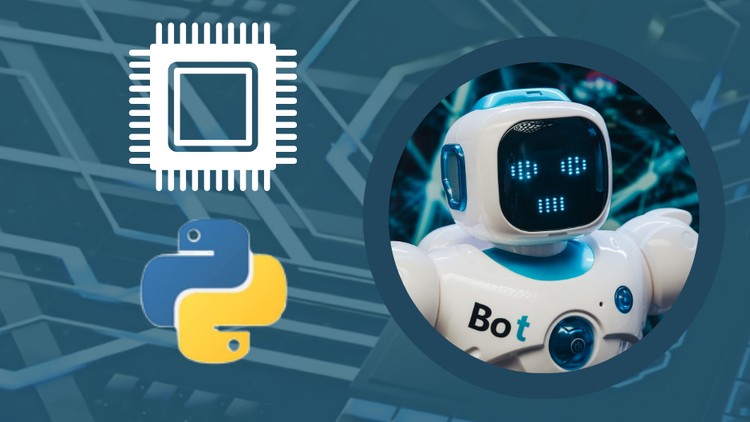1. Introduction to Machine Learning
2. Building a Machine Learning Model
3. Gathering Business Knowledge
4. Data Exploration
5. Dataset & Data Dictionary
6. Importing Data in Python
7. Importing the dataset into R
8. Univariate analysis and EDD
9. EDD in Python
10. EDD in R
11. Outlier Treatment
12. Outlier Treatment in Python
13. Outlier Treatment in R
14. Missing Value Imputation
15. Missing Value Imputation in Python
16. Missing Value imputation in R
17. Seasonality in Data
18. Bi-variate analysis and Variable transformation
19. Variable transformation and deletion in Python
20. Variable transformation in R
21. Non-usable variables
22. Dummy variable creation Handling qualitative data
23. Dummy variable creation in Python
24. Dummy variable creation in R
25. Correlation Analysis
26. Correlation Analysis in Python
27. Correlation Matrix in R
28. The Problem Statement
29. Basic Equations and Ordinary Least Squares (OLS) method
30. Assessing accuracy of predicted coefficients
31. Assessing Model Accuracy RSE and R squared
32. Simple Linear Regression in Python
33. Simple Linear Regression in R
34. Multiple Linear Regression
35. The F - statistic
36. Interpreting results of Categorical variables
37. Multiple Linear Regression in Python
38. Multiple Linear Regression in R
39. Test-train split
40. Bias Variance trade-off
41. Test train split in Python
42. Test-Train Split in R
43. Regression models other than OLS
44. Subset selection techniques
45. SubShrinkage methods Ridge and Lassoset selection in R
46. Ridge regression and Lasso in Python
47. Heteroscedasticity
48. Ridge Regression and Lasso in R
49. importing the data into Python
50. Importing the data into R
51. Three Classifiers and the Problem statement
52. Why cant we use Linear Regression
53. Logistic Regression
54. Training a Simple Logistic Model in Python
55. Training a Simple Logistic model in R
56. Result of Simple Logistic Regression
57. Logistic with multiple predictors
58. Training multiple predictor Logistic model in Python
59. Training multiple predictor Logistic model in R
60. Confusion Matrix
61. Creating Confusion Matrix in Python
62. Evaluating performance of model
63. Evaluating model performance in Python
64. Predicting probabilities, assigning classes and making Confusion Matrix in R
65. Linear Discriminant Analysis
66. LDA in Python
67. Linear Discriminant Analysis in R
68. Test-Train Split
69. Test-Train Split in Python
70. Test-Train Split in R
71. K-Nearest Neighbors classifier
72. K-Nearest Neighbors in Python Part 1
73. K-Nearest Neighbors in Python Part 2
74. K-Nearest Neighbors in R
75. Understanding the results of classification models
76. Summary of the three models
77. Basics of Decision Trees
78. Understanding a Regression Tree
79. Stopping criteria for controlling tree growth
80. Importing the Data set into Python
81. Importing the Data set into R
82. Missing value treatment in Python
83. Dummy Variable creation in Python
84. Dependent- Independent Data split in Python
85. Test-Train split in Python
86. Splitting Data into Test and Train Set in R
87. Creating Decision tree in Python
88. Building a Regression Tree in R
89. Evaluating model performance in Python
90. Plotting decision tree in Python
91. Pruning a tree
92. Pruning a tree in Python
93. Pruning a Tree in R
94. Ensemble technique 1 - Bagging
95. Ensemble technique 1 - Bagging in Python
96. Bagging in R
97. Ensemble technique 2 - Random Forests
98. Ensemble technique 2 - Random Forests in Python
99. Using Grid Search in Python
100. Random Forest in R
101. Boosting
102. Ensemble technique 3a - Boosting in Python
103. Gradient Boosting in R
104. Ensemble technique 3b - AdaBoost in Python
105. AdaBoosting in R
106. Ensemble technique 3c - XGBoost in Python
107. XGBoosting in R
108. Content Flow
109. Concept of a Hyperplane
110. Maximum Margin Classifier
111. Limitations of Maximum Margin Classifier
112. Support Vector classifiers
113. Limitations of Support Vector Classifiers
114. Kernel Based Support Vector Machines
115. Regression and Classification Models
116. Importing and preprocessing data in Python
117. Standardizing the data
118. SVM based Regression Model in Pytho
119. Classification model - Preprocessing
120. Classification model - Standardizing the data
121. SVM Based classification model
122. Hyper Parameter Tuning
123. Polynomial Kernel with Hyperparameter Tuning
124. Radial Kernel with Hyperparameter Tuning
125. Importing and preprocessing data in R
126. Classification SVM model using Linear Kernel
127. Hyperparameter Tuning for Linear Kernel
128. Polynomial Kernel with Hyperparameter Tuning
129. Radial Kernel with Hyperparameter Tuning
130. SVM based Regression Model in R








